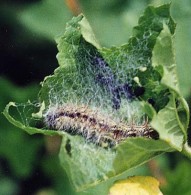Painted Lady Migration Anticipated in the Southwest
by David F. Marriott
Executive Director, The Monarch Program
10 March 2003
Large migrating numbers of painted lady butterflies (Vanessa cardui) and west coast lady butterflies (Vanessa annabela) should be present in the Southwest in late March and early April. Above normal rainfall in this region during the month of February helped produce an enormous wild growth of cheeseweed (Malva parviflora), a favorite host plant for these two species of painted lady butterflies.
The anticipated population increase and possible mass migration is based on a high number of larvae present on the host plants at this writing (10 March 2003). Predation is low this time of year because the caterpillar’s main predators; the tachinid flies (which parasitize the larvae), and chalcid wasps (parasitizing the pupae), are fewer in numbers this early in the season. The low number of predators should help increase the butterfly population.
Mass migrations of painted lady butterflies occur about once every 10 years with smaller movements depending on rainfall and climate conditions. Our last great migration of millions occurred in April of 2000, where some isolated areas had enough butterflies to simulate the number of monarchs in a central Mexico overwintering site.
Now is the time to collect caterpillars in vacant fields for class projects, photography, or to simply enjoy their life cycle. Larger caterpillars are often found inside a hibernaculum (a folded leaf with larvae silk holding it together). Young caterpillars are found in the middle of the leaf protected by silk webbing. When rearing the caterpillars, be sure to have a suitable cage and provide fresh cuttings of cheeseweed in a narrow-neck bottle with water. Be sure to put the cuttings in water immediately, or extract the entire plant with the root. Do not expose the plant or cuttings to direct sunlight. When your caterpillar pupates, it should become a butterfly in about two weeks.
